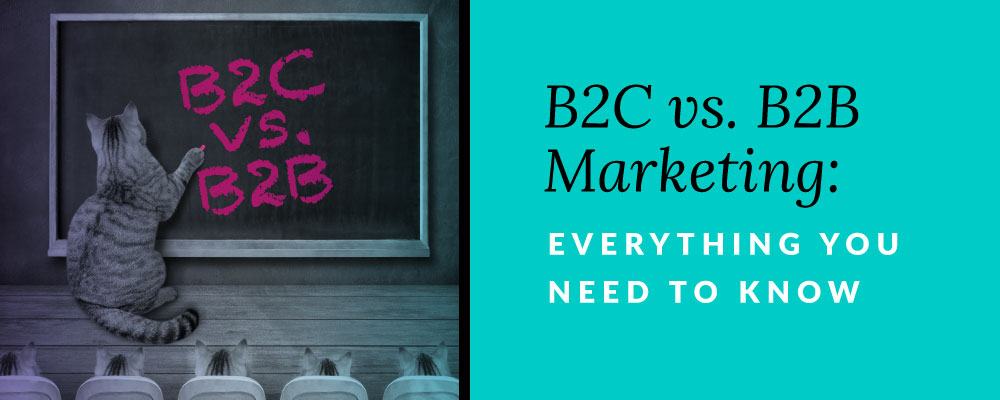
Hey guys! Today’s post is all about B2C vs. B2B marketing and how to sell to different buyer types.
If your online marketing and sales strategy isn’t working, it very well could be because you’re speaking to the wrong kind of buyer. So, this quick-and-dirty guide is going to help you fix what’s gone wrong with your current strategy or set you on the right path if you’re just starting out!
Before you start building a website or branding for your business, you need to figure out:
Is my business going to be Business-to-Business or Business-to-Consumer?
Of all the questions you have to ask yourself when you’re starting a new business, this is one of the easier ones to answer. And, yet, many business owners and freelancers still make the mistake of shaping their marketing strategy around the wrong kind of buyer.
So, today, we’re going to break down the difference between B2C vs. B2B and what you can do with this knowledge to shape a marketing strategy that appeals to your target customers.
What’s the Difference Between B2C and B2B?
First things first, let’s dissect what these acronyms mean.
B2C stands for “business to consumer”.
These businesses sell products and services directly to customers who use them for personal consumption. For example:
- E-commerce companies that sell lifestyle products
- Personal coaches
- Fitness trainers
- Photographers
B2B stands for “business to business”.
These businesses also sell products and services. However, their target buyer is a business that uses the solution for professional purposes. For example:
- SaaS companies
- Business coaches
- Public speakers
- Web designers, developers, copywriters, and other creatives
There’s a pretty clear divide between the two. Now, let’s talk about how you need to shape your marketing strategy based on who your buyer is.
If you market to B2C, read this.
If you market to B2B, read this.
How Do You Market to B2C Buyers?
For this explanation, I’m going to use the Baila Studio website as an example.

Target Buyer
It should be clear right from the get-go that your website targets individual consumers. The images and tone of voice should be all a B2C user needs to figure out, “Okay, I’m in the right place.”
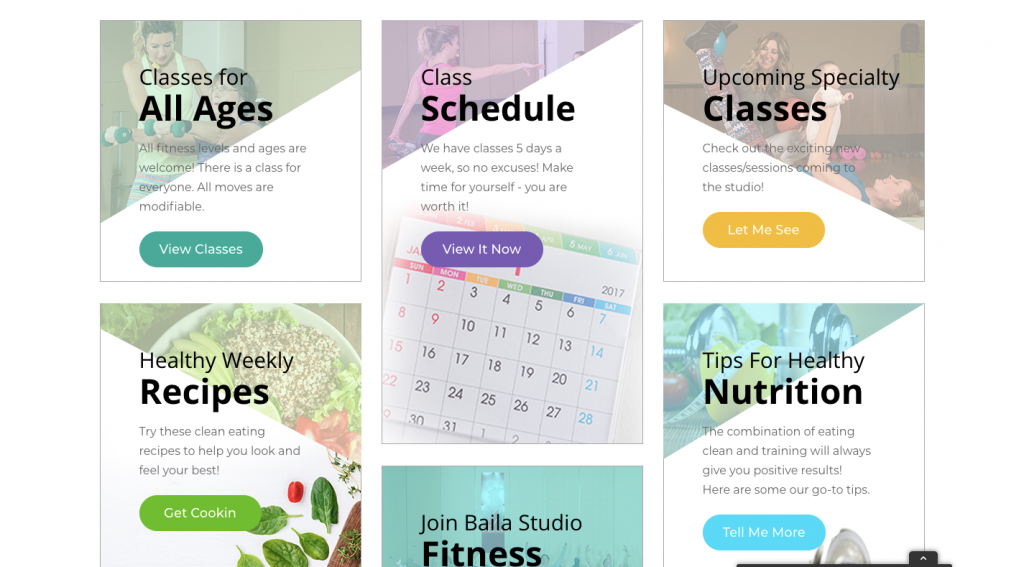
If you’re nervous that your services are a bit ambiguous in terms of who you serve (which could happen if you’re a service provider like a coach or photographer), spell it out quickly just as Baila Studio does with “Classes for All Ages”.
Tone
B2C companies have a lot of leeway in terms of how they speak to their audience. That’s why it’s not uncommon to find exclamation marks, slang, and sometimes even emoji on these kinds of websites.
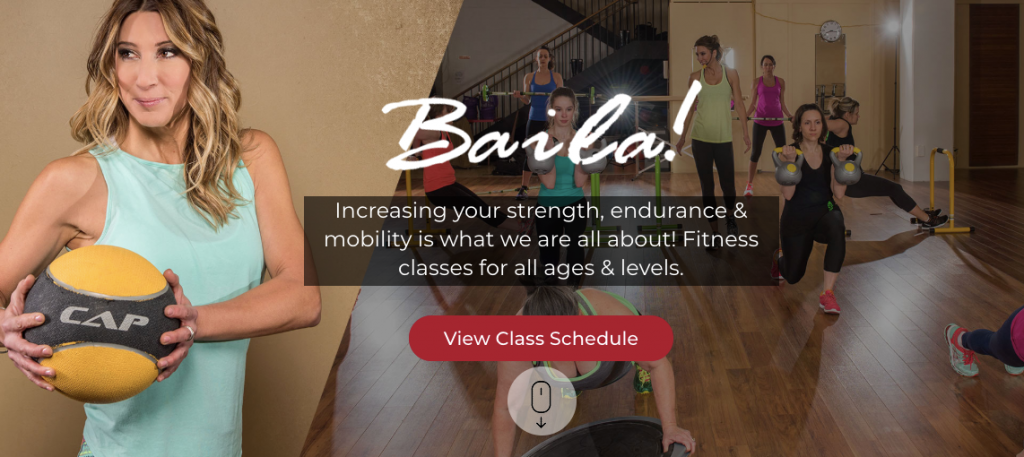
This lets the visitor know that you’re on their level. Just make sure the tone of voice on the site matches your brand persona as well as the “tone” of your product.
Messaging
With B2C, you’ve got no time to waste. Get right into their pain and immediately offer your solution.
For the most part, you will lead them straight to your product or service.
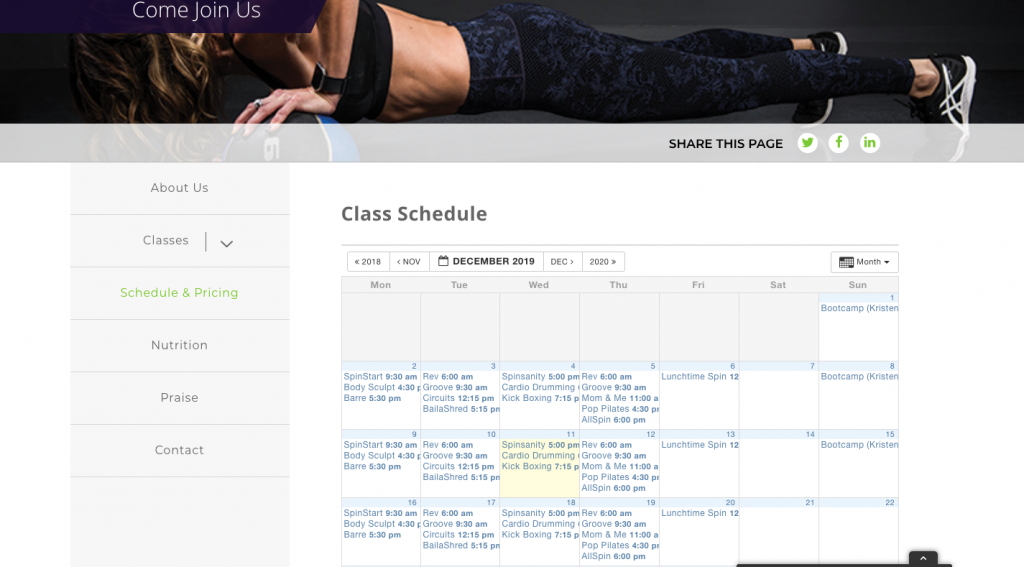
Provide the bare minimum in details upfront. Then, give them the option to dig deeper if they need them to help in the decision-making process.
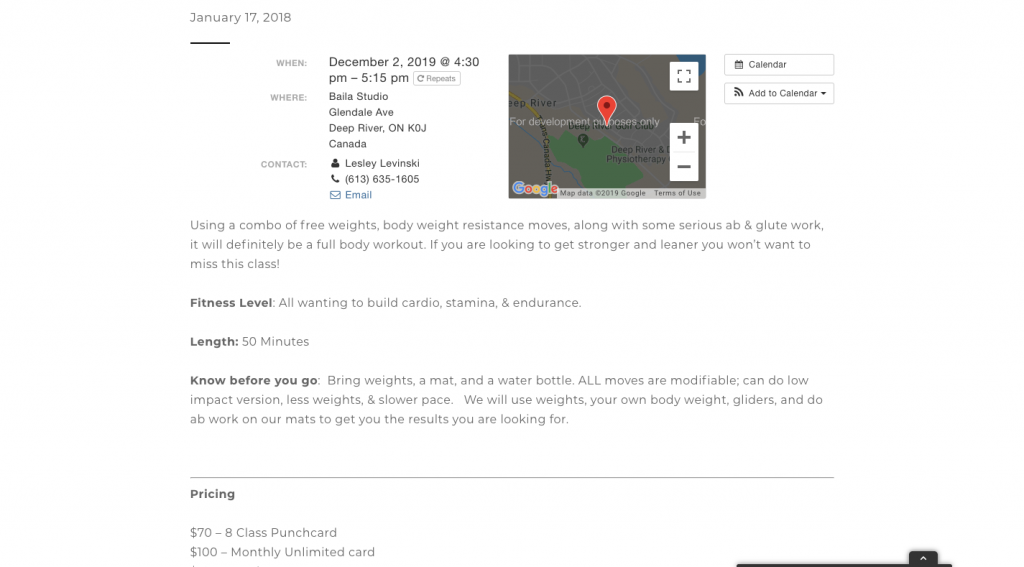
But always remember to keep it straight and to the point.
Social Proof
Social proof is important no matter if you market to B2C or B2B. What does matter is the form it takes.
For B2C, your focus needs to be on collecting real reviews from real people.
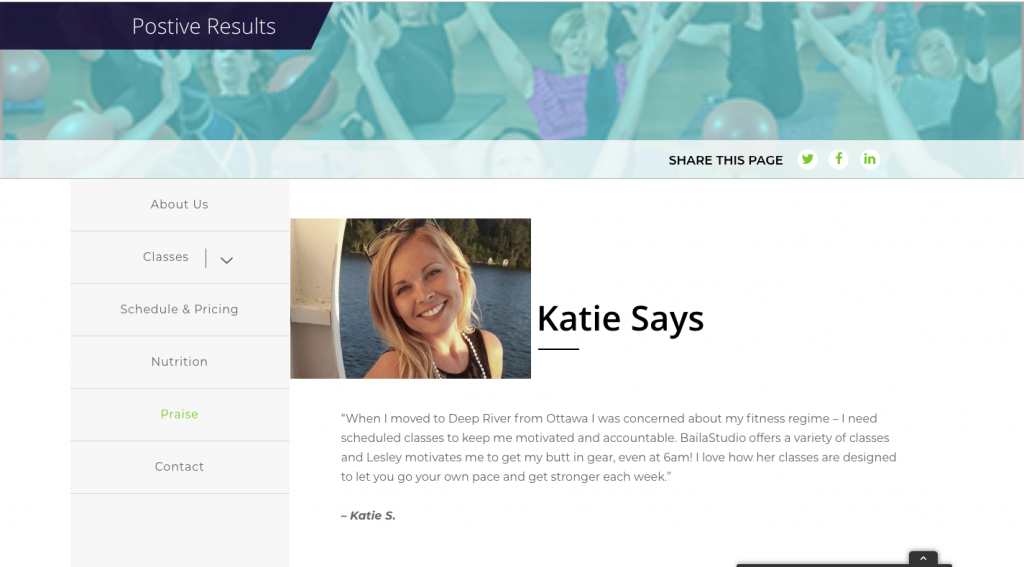
You’re in the business of connecting to people, not faceless business entities. So, make sure you show off your customers’ faces and names so prospective customers make a more personal connection to your brand.
And don’t forget to integrate social elements into this section, whether you embed a social media feed that shows off your FOMO-inducing posts or simply give them a way to connect to your awesome digital community.
Call to Action
When it comes to consumers, there typically isn’t a lengthy or complicated sales process, so the call-to-action should be delivered right away.
In the case of a brick-and-mortar business, it could be as simple as “View Pricing and Class Schedule”:
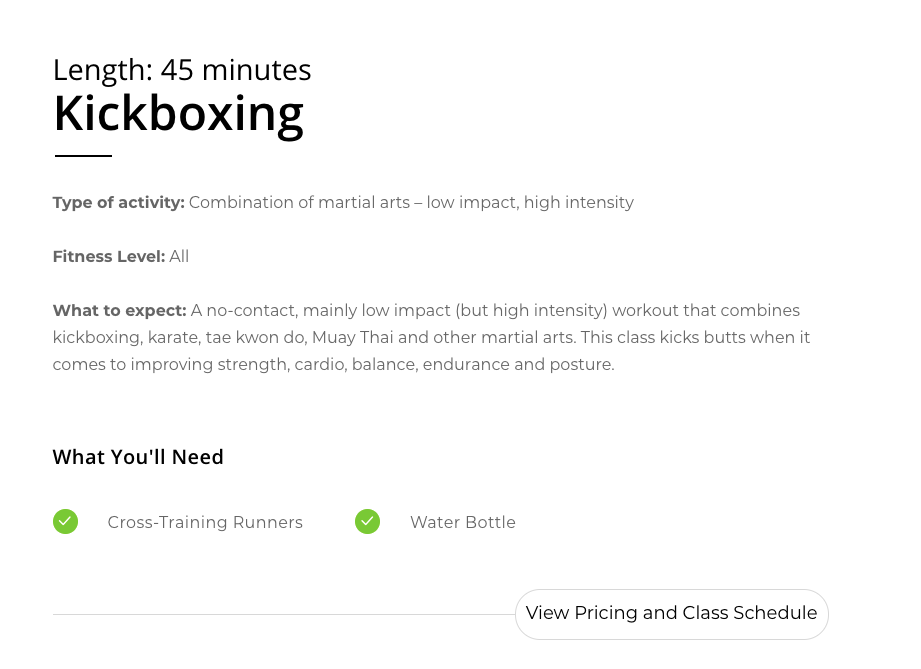
That makes sense for a drop-in business.
However, if you take appointments, it might be “Reserve Your Spot Now”. Or “Buy a Session”. And with products it would be as simple as “Add to Cart” or “Buy Now”.
Your call-to-action all depends on what you’re selling and how you sell, but it should always be short and sweet.
Marketing Follow-up
Even though the sales cycle is fairly quick for B2C customers, that doesn’t mean your relationship with them ends that quickly. You always need to think about how you’re going to use marketing to build a lifelong connection with your customers.
A good way to do this is to get them on your email list.

You should also invite them to connect with you on social.
Oh, and don’t forget about blogging. Not only does it give you a good reason to get back in front of your email subscribers and social followers, but it helps new people discover you on the web all the time.
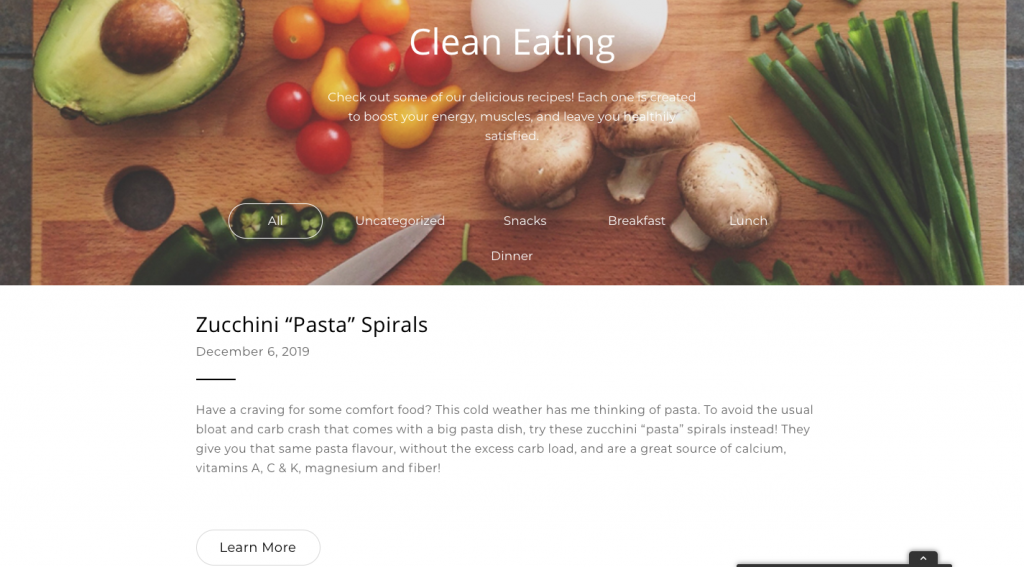
This particular blog isn’t “bloggy” at all. It’s actually a bunch of nutritional tips and recipes. Find out what motivates your customers to reconnect with your company, and start writing about it!
How Do You Market to B2B?
For this explanation, I’m going to use the Sales in a New York Minute website as an example.
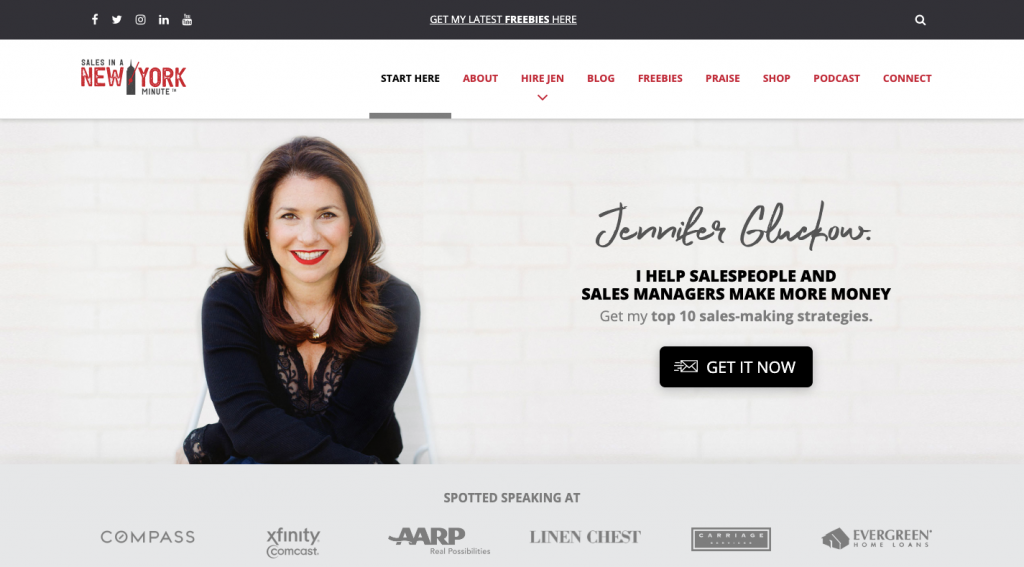
Target Buyer
Before designing a B2B website or writing the content for it, you have to figure out who your buyer is. This isn’t always easy as there are sometimes different people involved in the buying and decision-making process.
This is why it’s so important to run through the buyer persona exercise to make sure everything on the site speaks directly to the right person, be they the business owner, CTO, project manager, accountant, etc.
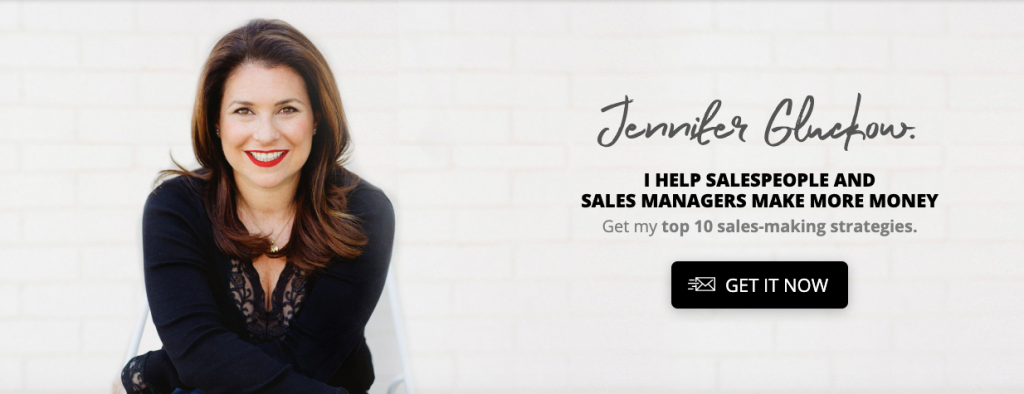
You may even want to spell it out as Sales in a New York Minute does just to reinforce who you want and should be speaking to.
Tone
While you can certainly infuse some personality into the tone of your website, you want it to have an overall more buttoned-up appearance.
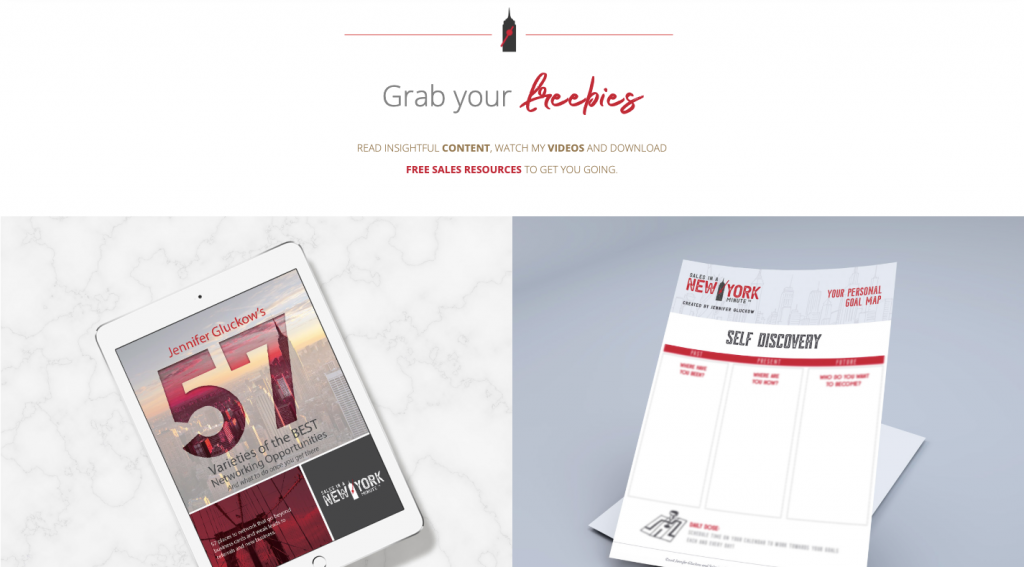
You can see here that, even though there’s a bit of an edge to the design, it’s a very clean-cut website. Professional. Logical. To the point. And it speaks the same exact language as the buyer.
Messaging
With B2B, it’s okay to take some time to explain what it is you do and, more importantly, how it solves your buyers’ pains. The B2B sales process can take awhile depending on what kind of solution you sell and at what price point, so don’t try and rush it.

A good way to approach this is by:
- Addressing the pain and acknowledge how it negatively impacts your users’ businesses.
- Introduce your business (or yourself if you’re a solo service provider) and explain what makes you qualified to provide the solution they need.
- Spell out the next steps. There should be no mystery about what they’re getting into.
- Give them some room to roam. Free content (e.g. blog posts, downloads, etc.) will encourage them to do that.
While you want the sale, that can’t be your main message here. It has to be: “I understand your pain. I want to help. Let me know if I can be of service.”
Social Proof
The type of social proof you use depends on what you’re selling. For instance, Sales in a New York Minute shows off an impressive list of high-profile speaking gigs:

Considering Jennifer Gluckow is a professional coach and public speaker, this is a critical part of establishing her credentials.
Other B2B businesses might need to show off client testimonials, share case studies, or even aggregate reviews from Google and Facebook. Again, your business model should dictate what sort of social proof will help you make more sales.
Call to Action
Although you can expect it to take at least a few engagements to convince B2B customers to buy, you should still have a prominent call-to-action on your website.
That said, in some cases, it’s not going to be as explicit as “Buy Now”. Take, for instance, this CTA button:

Why is the call-to-action to “Apply” instead of “Buy” or “Sign Up”? Well, with this kind of business model, you actually need to vet your prospective customers as much as they’re vetting you. So, a discovery call is an essential part of the process.
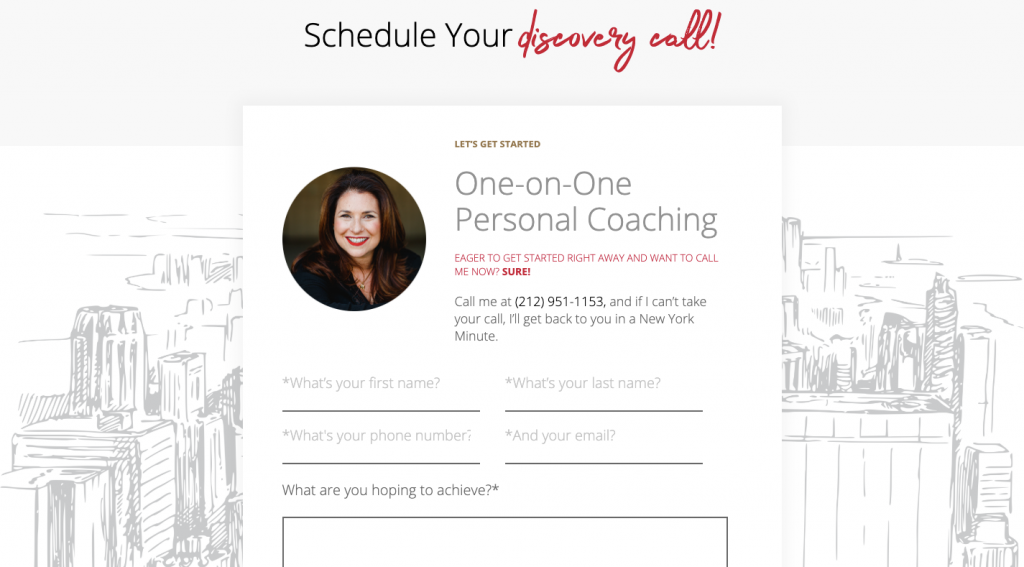
But, again, it can take awhile for B2B buyers to get to the point where they’re confident enough to fill this out. That’s why lead generation and nurturing is huge for this buyer segment.
Marketing Follow-up
B2B sales can get tricky because there’s often a bit of research your buyers want to do before having a discovery call or signing up for a product. You can’t badger them into making the purchase either. That just won’t work.
Instead, your website needs to be set up for lead generation. Then, the rest of your marketing will handle the in-depth nurturing piece.
If you visit the Sales in a New York Minute website, you’ll notice that most of the home page is a lead generation machine.

The first offer is for a free ebook, which is a strong approach for getting new clients.
The second offer is access to free sales resources and content.
The third is for free, informative blog, video, and podcast content.
You get the point. Your website needs to be so chock full of value that, by the time your emails start hitting their inbox, they’re already thinking that it would be a good idea to work with you.
Wrap-Up
B2C vs. B2B marketing… You’d think there wouldn’t be much of a difference. After all, we’re all just targeting people, right? But think about your own life and how you approach purchases with different mindsets.
In your personal life, you’re thinking about buying things that’ll enrich your life. But in your business, you’re thinking about buying things to help your business grow and make more money.
That’s why businesses can’t just use any sales or marketing strategy with their buyers. It takes time to figure out where your buyers’ minds are at and to create marketing that caters to it.
If you need help putting together the right website for your buyer, let me know. I’ve designed websites for both B2C and B2B and so I know how important it is to send the right message to your target buyer.
Psst...before you go! Get our FREE e-book:
how to attract, delight and close more clients
PLUS GET DESIGN TIPS, ADVICE & FREEBIES DELIVERED TO YOUR INBOX
DOWNLOAD THE EBOOK
Ashley Gadd
Written By:
Ashley Gadd is an award-winning business brand strategist, website designer, and educator who helps clients turn their ideas into captivating and strategic brands that convert. Blending her background in nonprofit marketing with her education in design, Ashley offers customer-centric brand experiences that connect the visual and strategic dots providing her clients the tools to build a sustainable and profitable business they’re proud of.
Brand Strategist - Website Designer - Educator
Leave a Reply Cancel reply
Anything is possible. Explore more.
CONTENT MARKETING
Case Studies
BUSINESS STRATEGY
WEBSITE
BRANDING
Sales Funnels
Let's be Friends!
Connecting the design and marketing dots to create a visual story that captures your shine and shares your message and mission in style.
Use this worksheet to bring more clarity to your business! Let this be your first step before you tackle your ideal customer profile and buyer persona.
FIND YOUR NICHE WORKSHEET!
DOWNLOAD THE WORKSHEET
Stick Around!
and bring much-needed clarity to your business.
JOIN IN THE CONVERSATION